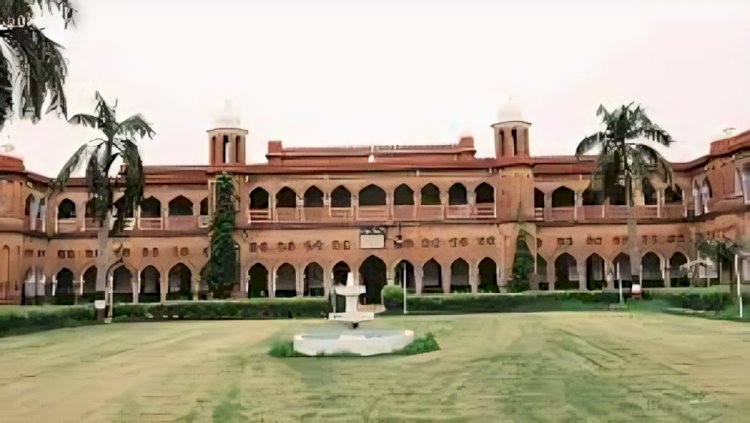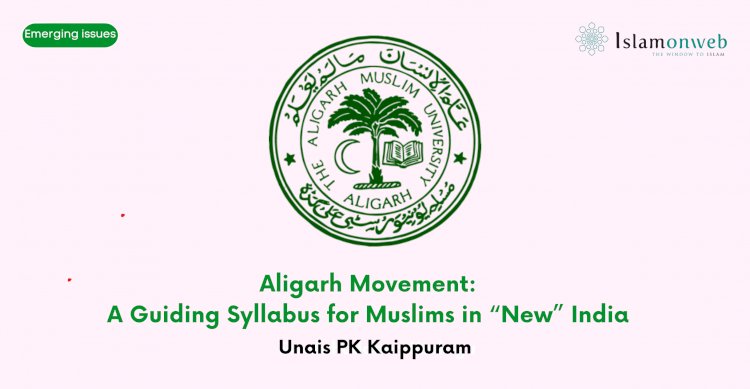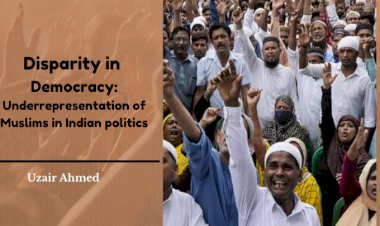Aligarh Movement: A Guiding Syllabus for Muslims in “New” India
Recently, the Muslim community in India has encountered significant challenges. The Prana Pratishta of the Ram Temple in Ayodhya witnessed the demolition of a 16th-century mosque, built by Mughal emperor Babur. This event was celebrated nationwide by the Sangh Parivar. Subsequently, a district court judgment permitted puja inside the Gyanvapi mosque. In Uttarakhand, several madrasas and mosques were destroyed, and Chief Minister Yogi Aditya Nath mentioned over two thousand mosques, including those in Kashi and Mathura, being on a list. He hinted that even iconic monuments like the Taj Mahal might be included.
The Muslim community, alongside other minorities, bears the brunt of the Sangh Parivar's communal politics, with the depth of their crisis intensifying. Addressing this requires thoughtful consideration.
Simultaneously, the minority status of Aligarh Muslim University is under scrutiny, with the Supreme Court's Constitution Bench concluding a detailed hearing and deferring the verdict. Given the current climate, the potential rejection of minority status might not come as a surprise.
The significance of Aligarh extends beyond its representation of the Muslim community in higher education; it encapsulates a crucial period in post-independence Indian history. In the pre-independence era, various strategies were explored by community leaders to address the dire state of the Muslim community, and among them, Aligarh stands out as the most enduring and influential. The lessons from Aligarh continue to resonate in contemporary discussions about the survival of the Muslim community, transcending historical contexts.
The aftermath of the First War of Independence in 1857 saw severe repercussions for Muslims, who bore the brunt of British retaliation. Massacres occurred in Delhi, Kanpur, and Lucknow, resulting in the irretrievable destruction of the Mughal Empire—a symbol of Indian Muslim self-esteem. The royal family, once emblematic of that self-esteem, suffered heavily at the hands of the British. The clerics leading the uprising, often referred to as the Sepoy Mutiny, were either exiled or imprisoned. This mass incarceration reflected the British perception that Muslims were the key orchestrators of the anti-colonial agitation.
The aftermath of 1857 marked a turning point; the last vestiges of self-confidence were shattered, plunging the Indian Muslim community into an uncertain future. While they held onto Allah's Deen and its principles, the absence of visionary leaders hindered the community from translating these principles into tangible actions on the ground. Aligarh, with its enduring legacy, serves as a syllabus that continues to offer valuable insights for the community's survival, even in the contemporary landscape where historical contexts may differ.

Throughout the history of Muslims in India, diverse strategies for social progress have been employed to enhance their lives. These include Muslim rule, the Sufi models that facilitated silent yet impactful social, public service, and preaching activities, reform movements combating religious, social, and cultural decay, revival initiatives during the last phase of Mughal rule, and anti-colonial armed resistance.
Sir Syed Ahmad Khan and the Aligarh Movement filled a critical void in the historical landscape. While he may not have emerged as a unifying leader who galvanized Indian Muslims at an emotional and ideological level, Sir Syed Ahmad Khan introduced a novel approach during a pivotal period. His unconventional religious approaches and viewpoints faced criticism for their departure from traditional ideas and actions.
Sir Syed Ahmad Khan and the Aligarh Movement introduced a fresh perspective that diverged from the prevailing thoughts of Muslim leaders and scholars at that time, contributing to a paradigm shift in the trajectory of Indian Muslim thought and action during that crucial period.
Ahmed Khan staunchly opposed colonialism, and it was his dedication to safeguarding Islam and Muslims that earned him recognition as a philosopher, statesman, and a hero in educational endeavors. Confronted with the collapse of Mughal rule and the implications of armed struggle against colonial powers, he drew insights from the experiences of the 1857 freedom struggle and acknowledged the military, civil, and intellectual prowess of modern Europe, particularly Britain. Faced with these realities, he contemplated the direction Muslim India should take, leading to the inception of the Aligarh movement and its educational curriculum.
In contrast to a short-term fix-it-all approach, Ahmed Khan adopted a foresighted perspective, envisioning what needed to be assembled to illuminate the future. Recognizing the impact of the British-implemented educational system designed to create compliant natives free from colonialism, he noted the establishment of universities and colleges in Calcutta, Madras, and Allahabad, primarily attended by upper-caste Hindus, while Muslim scholars were marginalized. Ahmed Khan realized that disengaging from this educational framework would leave Muslims at a disadvantage within the upper Hindu middle class. His intent was to cultivate a competitive and indispensable layer within the Muslim community. Observing armed struggle as a potentially suicidal path, he emphasized the necessity of education and technological progress for the protection of Islam and the Muslim identity.
Aligarh University and the Aligarh Movement are the tangible embodiments of Sir Syed Ahmad Khan's visionary ideals. In the pursuit of establishing the university, he undertook tours to various foreign universities. During one such visit, he was particularly struck by the Christian church within the university campus, which inspired the construction of the Sir Syed Masjid in the Aligarh campus. Sir Syed Ahmad Khan asserted that the Urdu language serves as a representation of India's rich diversity. Consequently, when the Congress advocated for the protection of the Hindi language, he staunchly insisted that Urdu should receive equivalent protection and recognition.
From a religious standpoint, certain extremes and positions taken by him may not have garnered acceptance from the Muslim masses. It is plausible that in his desperate efforts to implement his plans, there might have been instances of exaggeration. However, it is essential to recognize that, at its core, all his endeavors were aimed at providing the community with enhanced education and improved living standards.
Aligarh's notable contribution lies in fostering a generation proud of its Muslim identity within the complex fabric of India and cultivating an educated cohort capable of leading the nation. The profound impact of Aligarh is evident in the fact that the university has been a target of the RSS from its inception. Regardless of the varied opinions on Sir Syed Ahmad Khan's approaches, Aligarh remains a guiding syllabus within the curriculum for Indian Muslims, offering a path to reinforce and fortify their identity.
About the author
Unais PK Kaippuram, Teacher, Darul Huda Islamic University West Bengal Campus, Birbhum
Disclaimer
The views expressed in this article are the author’s own and do not necessarily mirror Islamonweb’s editorial stance.
























Leave A Comment